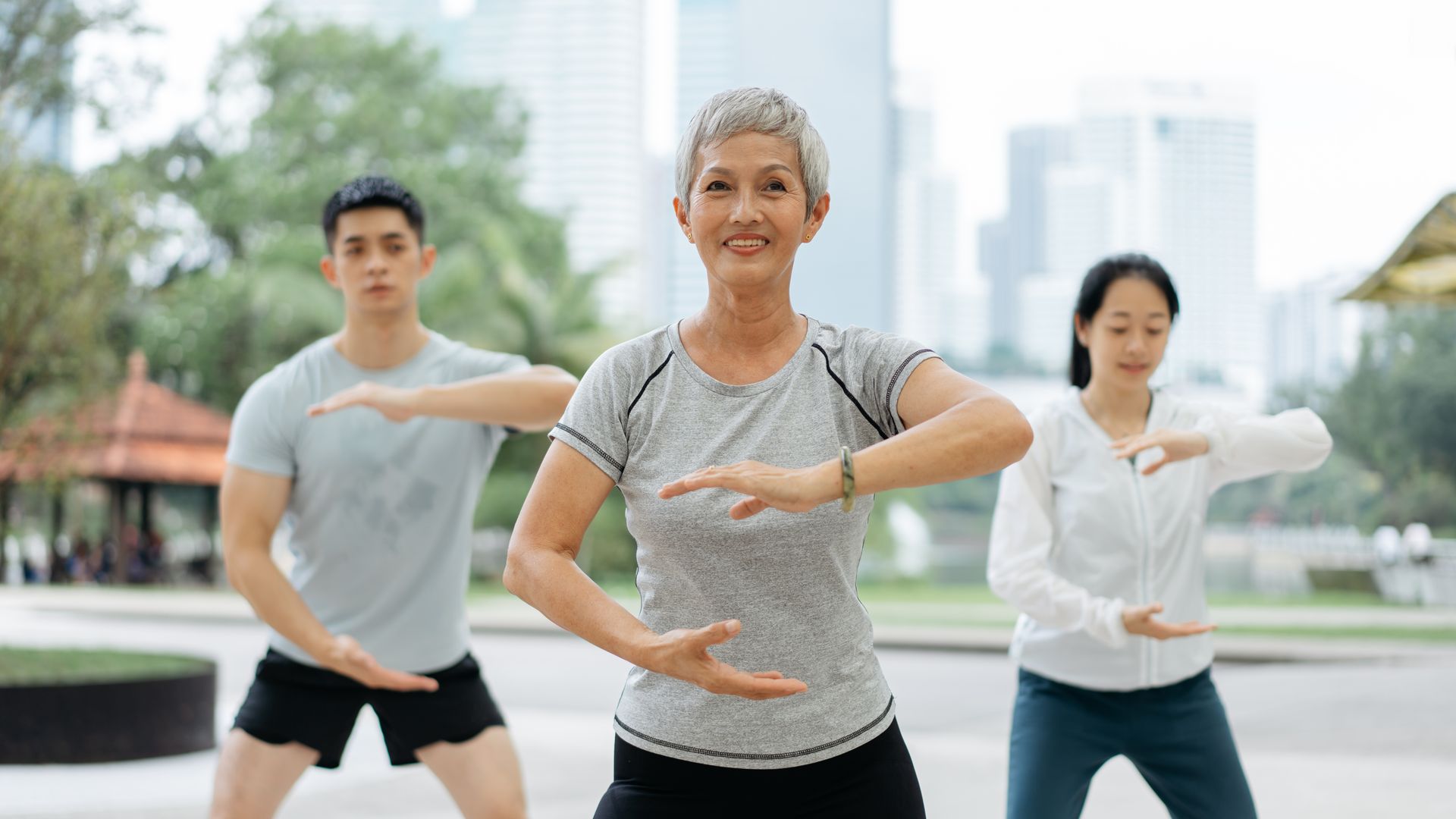Staying active is one of the greatest allies for longevity. Yet when we think about exercise after 60, the first images that often come to mind are daily walks or light jogging. These are accessible options, but are they truly enough to boost energy, improve sleep, and keep the mind sharp?
A study from Harvard Medical School highlights a powerful alternative that is gaining traction and redefining active aging: traditional martial arts.
Why Tai Chi and Aikido go beyond walking
Disciplines such as Tai Chi, Aikido, or Wing Chun are characterized by slow, mindful movements that are deeply respectful of the body. Unlike repetitive walking or running, which may become monotonous or even strain the joints over time, these practices provide full-body training with multiple benefits: strengthening muscles, improving balance, stimulating concentration, and protecting joints.
What sets them apart is their holistic dimension: they train the body, mind, breath, and even emotional connection. As Dr. Peter M. Wayne, a Harvard researcher, explains:
“Tai Chi helps preserve the body’s physiological complexity, the ability to adapt flexibly to the challenges of aging. This translates into longer life, greater stability, and a deeper sense of connection.”
Expert Insights: Why martial arts are ideal after 60
We spoke with Victor Diaz (@prohealth.vd), a personal trainer specialized in physical activity and sports. He explains why martial arts are becoming one of the safest and most complete disciplines for people over 60, and how they can be integrated into daily routines to support both physical and emotional health.
“Disciplines like Tai Chi or Aikido improve balance, coordination, body awareness, and postural control, crucial factors for preventing falls and maintaining autonomy in daily life.”
Are Martial Arts Better than Walking or Running after 60?
Walking and running are valuable for older adults because they improve cardiorespiratory fitness, a key indicator of health and longevity. They also benefit metabolic health (including glucose, cholesterol, and blood pressure) and help maintain a healthy weight and body composition.
However, Tai Chi and Aikido provide complementary benefits that are especially relevant in later life: they enhance balance, coordination, and posture, crucial for preventing falls and maintaining independence.
Key Benefits of Practicing Soft Martial Arts After 60
- Improves balance and proprioception, reducing the risk of falls.
- Enhances joint mobility, preserving joint health and functionality.
- Supports cardiovascular health and stimulates muscle mass.
- Boosts coordination and helps maintain autonomy in daily activities.
- Strengthens mental focus and emotional well-being.
- Preventing Falls: Why Martial Arts Matter
Falls are one of the most significant geriatric syndromes and the second leading cause of accidental death worldwide. It is estimated that one in three people over 65 experiences a fall each year, and the rate rises to 50% among those over 80.
Tai Chi is one of the most widely studied exercises for fall prevention because it improves stability and reaction speed when stumbling. Meanwhile, Aikido teaches protective movements and fall recovery techniques, offering an additional layer of security.
How to start safely after 60
- Begin in a safe environment with classes adapted for older adults and guided by qualified professionals.
- Progress gradually, increasing intensity, duration, and complexity step by step.
- Complement martial arts with strength and balance training at least twice a week, targeting major muscle groups.
- Choose multicomponent programs that combine strength, balance, flexibility, and functional activities at least three times per week.
“The first recommendation is always to start in a safe environment with classes tailored and guided by professionals specialized in older adults.”
What makes exercise effective after 60?
Experts agree that physical activity for older adults should be:
- Multicomponent: combining aerobic, strength, balance, and flexibility training.
- Adapted and progressive: intensity and complexity should match individual health and ability.
- Safe and supervised: professional guidance is key for those with chronic conditions.
- Functional: exercises should transfer directly to daily life (getting up from a chair, walking steadily, reacting to a stumble).
- Regular and sustainable: enjoyable enough to foster long-term adherence.
- Cognitive and social: activities like Tai Chi, dancing, or group programs improve brain health and emotional well-being.
- Prevention-oriented: reducing risks of cardiovascular, metabolic, musculoskeletal, and neurodegenerative diseases.
Beyond Martial Arts: Other recommended practices
Disciplines like Qi Gong, yoga, dance, Pilates, or aquatic exercise also provide balance, coordination, posture control, and mental focus. Evidence is especially strong for Tai Chi and Qi Gong in improving mobility, balance, and cognitive function in older adults.
Ultimately, the best choice depends on personal preference, accessibility, and medical considerations.
Common mistakes older adults make when exercising
- Relying only on light aerobic exercise (like walking) and neglecting strength and balance.
- Avoiding effort out of fear of injury, which accelerates functional decline.
- Starting unsupervised programs without progression or adaptation to health conditions.
- Believing they are “too old” to exercise, when in reality, it’s never too late to benefit.
The science behind exercise and healthy longevity
Research consistently shows that regular, moderate, or even gentle exercise is linked to longer life and reduced risk of chronic diseases. There is a clear dose–response relationship: the more active you are, the greater the benefits, even small amounts of exercise provide measurable improvements.
Older adults who maintain an active lifestyle enjoy:
- Lower risk of falls
- Better functional capacity
- Improved cognitive function
- Greater independence and quality of life
As Victor Diaz concludes: “Keeping an active lifestyle after 60 is the best preventive medicine; it strengthens the body, protects mental health, and preserves independence.”
